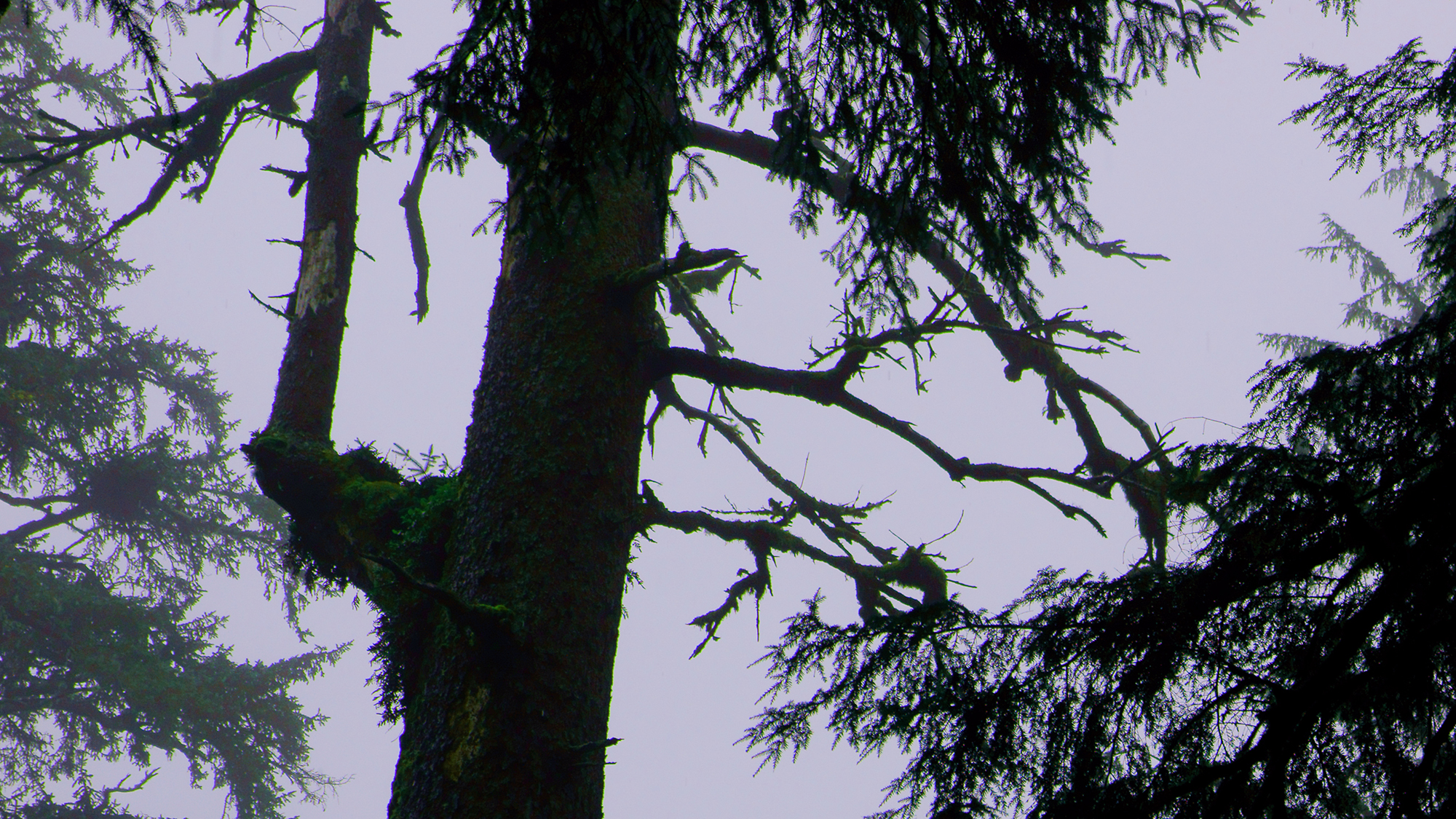

This article was originally featured on Hakai Magazine, an online publication about science and society in coastal ecosystems. Read more stories like this at hakaimagazine.com.
The marbled murrelet is an elusive creature. At sea, the stubby seabird dives at the first sign of predators. On land, it lays its eggs high in the mossy branches of the Pacific Northwest’s old-growth forests—a fact only serendipitously discovered by a utility-company employee climbing trees in the 1970s.
The murrelet is so mysterious that scientists call it the enigma of the Pacific. To try to monitor populations, researchers have donned drysuits to attach radio transmitters to the birds and have flown small airplanes to search for nests—efforts that are expensive and imprecise. Yet despite the scant data, the murrelet is on a clear downhill trajectory. In 1992, it was listed as threatened under the US Endangered Species Act. It suffers from habitat loss caused by logging old-growth forests and from diminishing marine prey due to climate change. Reversing the decline is difficult because the birds are so challenging to study. But by monitoring the soundscape of the forest using artificial intelligence, scientists have a revelatory new approach to studying the protected species.
“The murrelet is often cited as being one of the most difficult forest birds to work on,” says Adam Duarte, a biologist with the US Forest Service and lead author of a new paper on the novel technique. By merging computer science and recording technology with ecology, Duarte says, researchers are able to overcome many of the historical challenges.
To find a more effective way of studying the birds, Matthew Betts, an ecologist at Oregon State University and a coauthor, turned to spotted owl scientists. Like marbled murrelets, spotted owls are threatened and cryptic, and for decades, studying them involved luring the birds to be captured and banded. But, in 2017, a team of spotted owl researchers from the Forest Service and Oregon State University began testing something new: passive acoustic monitoring. The team deployed high-quality microphones at 150 sites across Oregon and Washington State to see if they could detect the owls from their calls.
In the first year alone, the microphones recorded 150,000 hours of audio, which took two full-time employees about two years to analyze. “It was incredibly labor intensive,” says Damon Lesmeister, a wildlife biologist involved with the spotted owl research.
Obviously, the team needed to automate the process, Lesmeister says. To do so, they turned the calls into spectrograms—a visual representation of sound waves in which the spotted owl’s call (like that of all species) produces a unique signature. Then, they developed something new: a convolutional neural network, a type of machine learning that could automatically identify and analyze the images.
But Lesmeister’s data didn’t only capture spotted owls, it also picked up any vocal species within the human hearing range. In this trove, murrelet scientists saw the potential to radically expand their reach. They trained the algorithm to automatically identify murrelet calls and, thus, detect their presence.
Looking forward, Duarte says this approach could allow scientists to identify the rate at which murrelets are calling in a patch of forest and use that to predict areas actively used for nesting—important because the United States protects nesting areas from cutting. “That would be awesome because it would feed straight into management decision-making for forests,” says Duarte.
Lena Ware, a biologist at the Canadian Wildlife Service who used an AI-powered platform called BirdNET to identify bird calls as a graduate student, says the scale of the murrelet research was impressive. Machine learning–based tools are already capable of much more than a lone human, she says. In Ware’s study area in northern Canada, BirdNET detected 20 to 60 percent more species than a human listener. But larger data sets—such as the one used in the murrelet research—will lead to even more accurate results, and a big-data approach will only increase the scale of research, she says. “There are so many more questions you can answer by having the vast acoustic data.”
In the Pacific Northwest, combining artificial intelligence and passive acoustic monitoring is just the beginning. Lesmeister’s team, for instance, is expanding beyond the marbled murrelet. The researchers have begun processing audio for 80 species on over one million square kilometers and, in 2023 alone, gathered more than two million hours of sound—a number that’s bound to increase. Working with the start-up Instinct, researchers have begun building processing capabilities into the recording devices themselves; the devices can identify the call of a target animal as it happens, allowing researchers to locate threatened species in real time. This kind of data will allow for more precise conservation actions, including pausing forestry operations or removing predators, such as barred owls, in key areas.
Fundamentally, knowing the state of at-risk species is an essential part of conserving them. “I think of myself as quite lucky that I’m [working] at a time when we have all of this available to us,” says Lesmeister. “Previous generations of ecologists couldn’t dream [of doing] studies like we’re doing today.”
This article first appeared in Hakai Magazine and is republished here with permission.